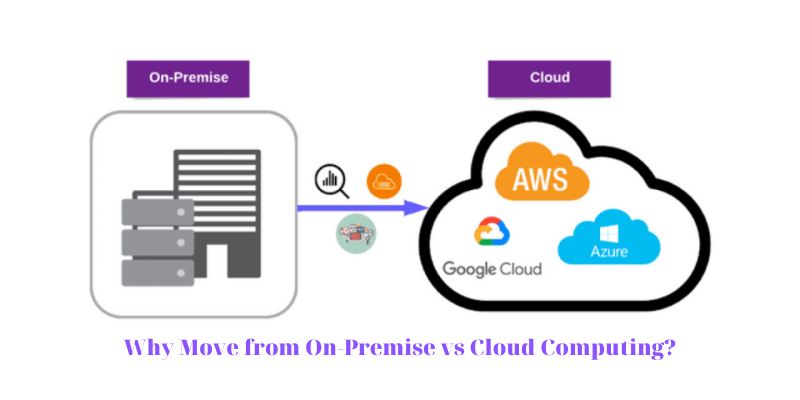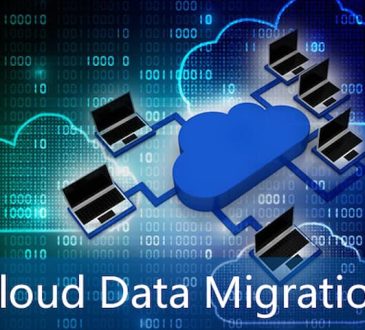
What is on prem vs cloud migration? An on-premise data center is one that a business owns and manages inside the boundaries of its administrative facilities. On the other side, the term “cloud” describes data centers that are owned, operated, and made accessible for usage by other businesses by a third party. Here’s an overview of on prem vs cloud migration we collected, let’s explored our article to learn What is on prem vs cloud migration?
Contents
On-premises data center definition
Private data centers that businesses house in their own facilities and care for themselves are referred to as “on-prem.” Private clouds that utilize virtualized computational resources much like public clouds can be operated using on-premises equipment (however, private clouds can also be run on leased third-party hardware).
All sizes and types of businesses are transitioning from on-premise environments to cloud computing. Businesses may now access almost limitless compute and storage capacity at a fraction of the expense of on-site infrastructure thanks to the migration to shared use of resources.
Digital assets, like as data, programs, and workloads, are moved from local data centers to remote, vendor-owned cloud infrastructure through on-premise to cloud migration. It can be difficult to migrate to the cloud, and not all businesses can do it all at once. For the majority, it is an iterative process.
The process of migrating from on-premises to the cloud, as well as its main commercial advantages and difficulties, are thoroughly examined by Dgtl Infra. To assist businesses in coming up with the best plan of action for their particular business and IT requirements, we also examine various cloud migration strategies and tools, as well as the services provided by the biggest cloud service providers (CSPs), including Amazon Web Services (AWS) and Microsoft Azure.
What is on prem vs cloud migration?
What is on prem vs cloud migration? An on-premise data center is one that a business owns and manages inside the boundaries of its administrative facilities. On the other side, the term “cloud” describes data centers that are owned, operated, and made accessible for usage by other businesses by a third party. Businesses can use a private or public (internet-based) network connection to access cloud infrastructure and services.
When a business migrates its data center operations from on-site facilities to cloud-based infrastructure controlled by a cloud service provider (CSP), such as Amazon Web Services (AWS), Microsoft Azure, or Google Cloud, this is known as on-premise to cloud migration. Servers, networking hardware, application software, business process services, and infrastructure software are some examples of data center capabilities.
To take advantage of the cloud’s flexibility, scalability, and affordability, businesses and enterprises are progressively migrating from on-premises infrastructure to the cloud. Many companies continue to keep their on-site data centers, nevertheless, since they need them for privacy, compliance with regulations, improved performance, and customisation requirements. In addition, such companies may choose to:
- Hybrid Cloud: allows migrating some data center capabilities to the cloud while still maintaining on-premise facilities (READ MORE)
- Hosted Private Cloud: provides a single-tenant cloud computing alternative in which the underlying infrastructure is hosted and maintained by a CSP but utilized by a single business
- Virtual Private Cloud (VPC): operates effectively like a hosted private cloud, but essentially, it is a logically isolated space within a multi-tenant public cloud environment
Why Move from On-Premise vs Cloud Computing?
After knowing What is on prem vs cloud migration, we move to the next part. On-site data centers can be expensive to set up, operate, and expand while offering limited computation and storage capacity. When backup and disaster recovery capabilities are taken into account, costs and complexity increase.
In contrast, cloud computing enables businesses to instantaneously access as much computation and storage as required without spending money on specialized hardware or hiring more IT personnel.
Benefits of On-Premise to Cloud Migration
The next part of the article about What is on prem vs cloud migration is their benefit. The following list of five main advantages for firms moving from on-premises to the cloud:
1) Scalability
Businesses can increase computation and storage capacity in the cloud on-demand without having to buy and set up physical servers and related infrastructure. Also, they are not required to purchase software licensing for new servers. Numerous public cloud service providers (CSPs) offer auto scaling, which allows resources to automatically scale up or down in response to changing demand, such as during peak traffic times of the year.
2) Cost-Effectiveness
Because businesses do not need physical equipment or support people on-site, the cloud lowers capital expenditure and maintenance costs. To prevent enterprises from overspending on resources they do not require, major CSPs offer cost optimization tools and services. Furthermore, the public cloud and its services frequently take business continuity and disaster recovery into account, which would otherwise result in higher expenses for different enterprises.
When a business has already made a sizable investment in an on-site data center, the cost-effectiveness of the cloud is occasionally viewed with skepticism. Companies can still cut incremental expenses, though, because they won’t need to spend money on new infrastructure as their organization expands or in preparation for sporadic demand spikes. Eventually, businesses will be able to provision and de-provision resources as needed while only. In the end, businesses can provision or deprovision resources as needed and only pay for what they use.
3) Security
Most cloud computing environments are normally safe and adhere to important industry standards and legal requirements, like the Payment Card Industry Data Security Standard (PCI DSS) and the General Data Protection Regulation of the European Union (GDPR). Furthermore, many organizations, especially small and medium-sized enterprises (SME) and start-ups, cannot afford the sophisticated tools and solutions that the cloud has access to. Leading CSPs also offer solutions for compliance, disaster recovery, identity & access management, and native security.
4) Performance
Due to physical distance, accessing data and applications hosted in on-site data centers remotely adds a significant amount of latency when firms grow geographically and adopt remote & flexible working. Contrarily, using the cloud enables businesses to increase their reach and host websites and applications close to their staff and end users, wherever they may be.
5) Faster Time-to-Market
CSPs provide pre-built apps and services that speed up invention and experimentation in addition to compute and storage. Small and medium-sized businesses (SMBs) were previously unable to access these types of apps, but now that they have access to their CSP’s cutting-edge, cloud-native technology stacks, they are able to respond to shifting consumer needs and market trends much more quickly.



